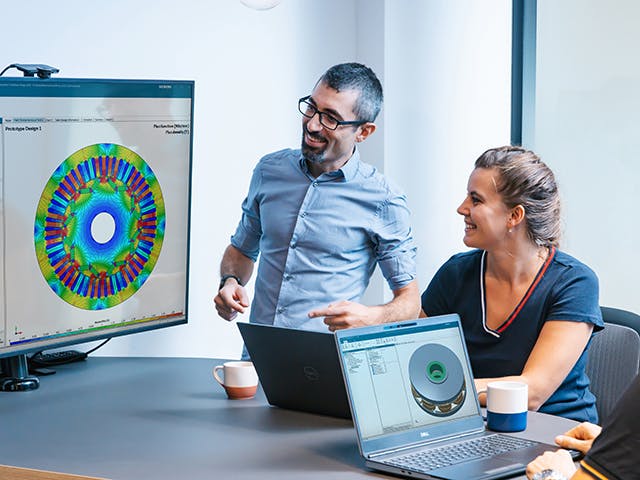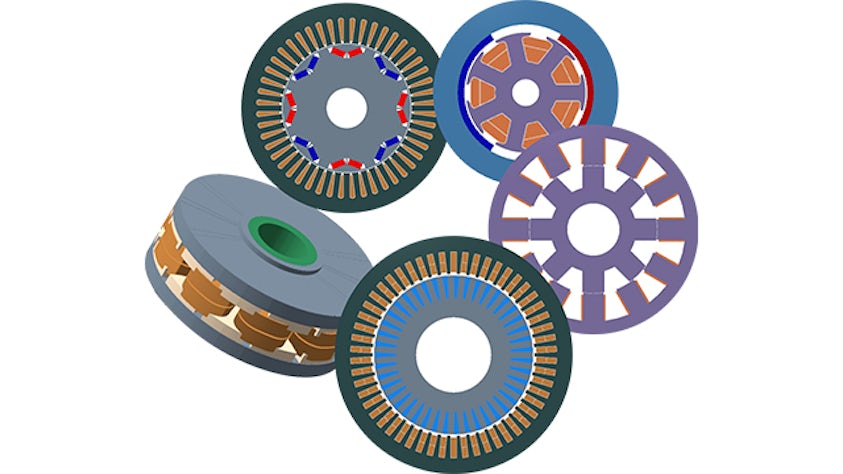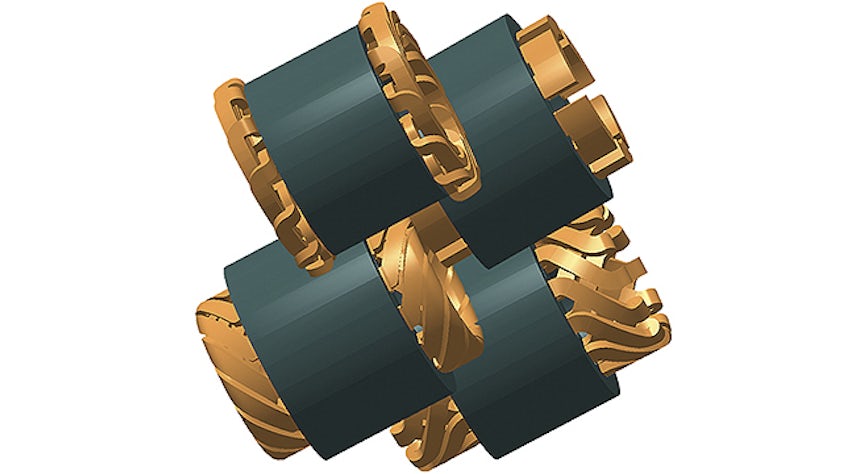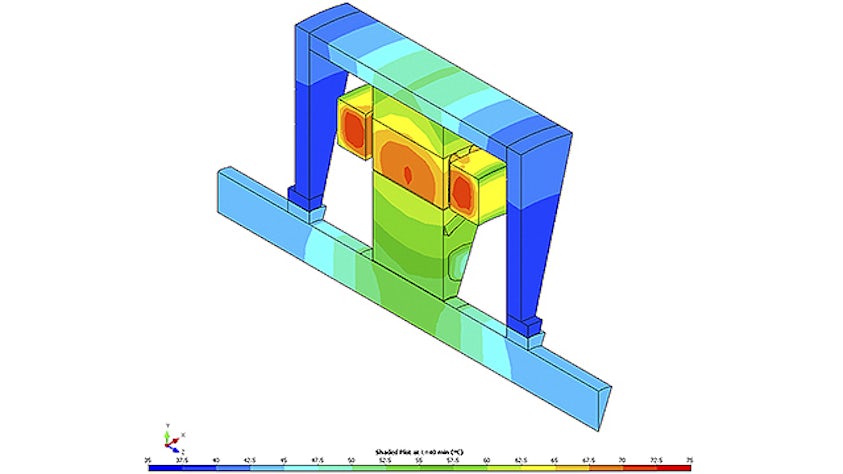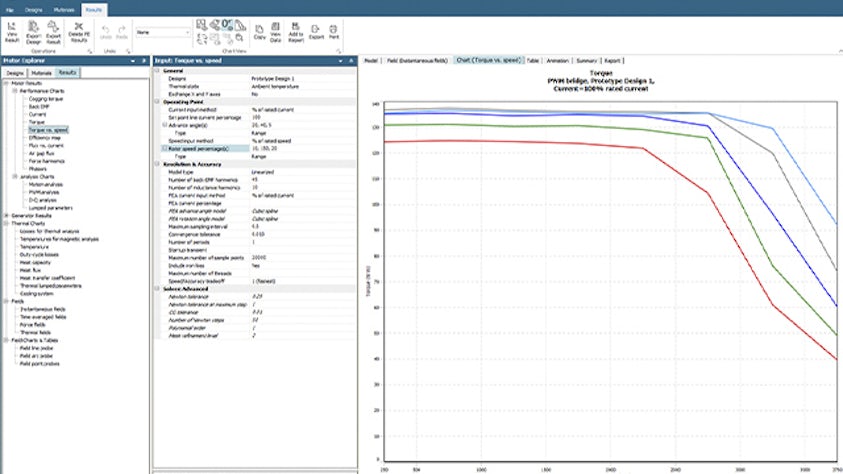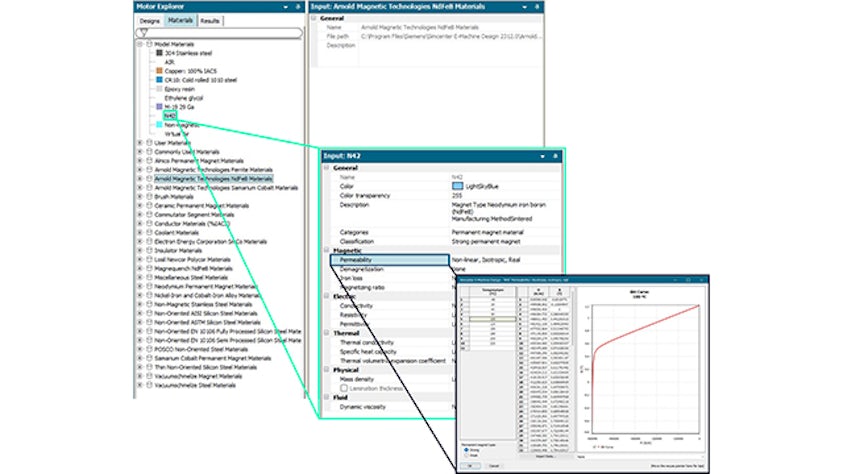Simcenter E-Machine Design consente di sviluppare rapidamente progetti di macchine elettriche tramite un'interfaccia utente basata su modelli, riducendo i tempi e i costi di sviluppo.
Modella la complessità: precisione su misura in base alle esigenze
Simcenter E-Machine Design è l'unico software che consente di scegliere tra esperimenti EMAG analitici, esperimenti EMAG analitici calibrati o esperimenti EMAG con metodo a elementi finiti [FEM]. Questa versatilità consente di regolare l'accuratezza e i tempi della raccolta dei dati sulle prestazioni in base alla fase appropriata del progetto.
Velocizza i processi con i modelli già pronti
Elimina la necessità di un esperto FEM e il complicato processo di configurazione di un modello, perfezionamento della mesh, definizione dell'esperimento desiderato e revisione. Utilizza il nostro software basato su modelli per eseguire automaticamente un'ampia gamma di esperimenti.
Inizia a dare forma alla tua idea, definiscila chiaramente ed esamina rapidamente le prestazioni che offre, riducendo la dipendenza da più prototipi fisici.
Esplora le possibilità – Soluzione completa
L'unico prodotto sul mercato che fornisce una soluzione completa per esaminare le prestazioni della macchina in "condizioni operative". È possibile evitare potenziali guasti utilizzando fin dall'inizio effetti magnetotermici abbinati automatici. Non vi sono scambi di file di dati o di geometria per ottenere l'accoppiamento, il che elimina potenziali errori dell'utente.
Questo è l'unico strumento di progettazione di macchine che offre modelli parametrizzati e funzionalità di modellazione per macchine a flusso radiale e assiale.
Inoltre, E-Machine Design si collega perfettamente all'ottimizzazione o all'esplorazione del design con il prodotto Simcenter HEEDS mediante un portale appositamente designato.
Rimani integrato con Simcenter Xcelerator
Per produrre un veicolo elettrico di fascia alta che sia allo stesso tempo efficiente e silenzioso è necessario un team di ingegneri che lavori al motore e al relativo alloggiamento, alla trasmissione e altro ancora per comprendere tutte le prestazioni NVH del veicolo. Gli strumenti Simcenter sono in grado di simulare tutte queste funzionalità e i loro formati di file nativi fanno in modo che gli aggiornamenti progettuali siano a disposizione di tutti gli ingegneri, garantendo che tutti lavorino sempre sui file più recenti.
Accelera, innova e ottimizza il processo di progettazione di macchine elettriche
Simcenter E-Machine Design è un nuovo prodotto costruito sulle spalle dei giganti, in quanto prende il meglio di Simcenter SPEED, Simcenter Motorsolve e Simcenter MAGNET per replicare gli esperimenti sulle macchine elettriche.
